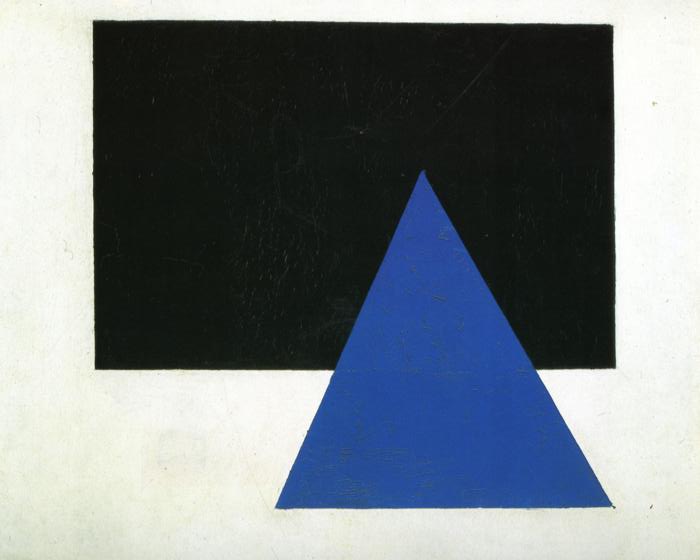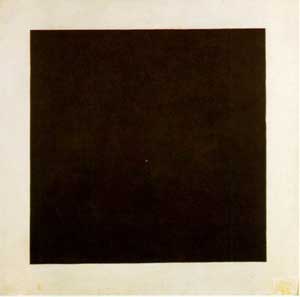Kazimir Severinovich Malevich (23 February 1879 – 15 May 1935) was a Russian painter and art theoretician of Polish descent. He was a pioneer of geometric abstract art and the originator of the avant-garde, Suprematist movement.
Kazimir Malevich was born near Kiev in the Kiev Governorate of the Russian Empire (today Ukraine) His parents, Ludwika and Seweryn Malewicz, were ethnic Poles. Both parents were Roman Catholic and they had fled from Kopyl Region of Belarus to Kiev in the aftermath of the January Uprising of 1863. His native languages were Russian and Polish.
Kazimir's father managed a sugar factory. Kazimir was the first of fourteen children, only nine of whom survived into adulthood. His family moved often and he spent most of his childhood in the villages of Ukraine, amidst sugar-beet plantations, far from centers of culture. Until age twelve he knew nothing of professional artists, although art had surrounded him in childhood. He delighted in peasant embroidery, and in decorated walls and stoves. He was able to paint in the peasant style. He studied drawing in Kiev from 1895 to 1896.
From 1896 to 1904 Kazimir Malevich lived in Kursk. In 1904, after the death of his father, he moved to Moscow. He studied at the Moscow School of Painting, Sculpture, and Architecture from 1904 to 1910 and in the studio of Fedor Rerberg in Moscow (1904 to 1910). In 1911 he participated in the second exhibition of the group, Soyuz Molodyozhi (Union of Youth) in St. Petersburg, together with Vladimir Tatlin and, in 1912, the group held its third exhibition, which included works by Aleksandra Ekster, Tatlin, and others. In the same year he participated in an exhibition by the collective, Donkey's Tail in Moscow. By that time his works were influenced by Natalia Goncharova and Mikhail Larionov, Russian avant-garde painters, who were particularly interested in Russian folk art called lubok. Malevich's described himself as painting in a "Cubo-Futuristic" style in 1912. In March 1913 a major exhibition of Aristarkh Lentulov's paintings opened in Moscow. The effect of this exhibition was comparable with that of Paul Cézanne in Paris in 1907, as all the main Russian avant-garde artists of the time (including Malevich) immediately absorbed the cubist principles and began using them in their works. Already in the same year the Cubo-Futurist opera, Victory Over the Sun, with Malevich's stage-set became a great success. In 1914 Malevich exhibited his works in the Salon des Indépendants in Paris together with Alexander Archipenko, Sonia Delaunay, Aleksandra Ekster, and Vadim Meller, among others. Malevich also co-illustrated, with Pavel Filonov, Selected Poems with Postscript, 1907–1914 by Velimir Khlebnikovand another work by Khlebnikov in 1914 titled Roar! Gauntlets, 1908–1914, with Vladimir Burliuk.
Malevich died of cancer in Leningrad on 15 May 1935. On his deathbed he was exhibited with the black square above him, and mourners at his funeral rally were permitted to wave a banner bearing a black square. Malevich had asked to be buried under an oak tree on the outskirts of Nemchinovka, a place to which he felt a special bond. His ashes were sent to Nemchinovka, and buried in a field near his dacha. Nikolai Suetin, a friend of Malevich’s and a fellow artist, designed a white cube with a black square to mark the burial site. The memorial was destroyed during World War II. The city of Leningrad bestowed a pension on Malevich's mother and daughter.
In 2013, an apartment block was built on the place of tomb and burial site of Kazimir Malevich. Another nearby monument to Malevich, put up in 1988, is now also on the grounds of agated community.
When it came to Malevich's work, I was mostly interested in the Suprematist movement that he was a part of.
Some examples of his work:
I found Malevich's work interesting for layout use. It was easier to work out design aesthetics for the publication after looking at Malevich's work, as it gave me some ideas of shapes that I could work with within my own little title page designs, for example using squares and thick lines.
Malevich's paintings also inspired colour choices for my publication, as well as helping towards stock considerations.
.jpg)



